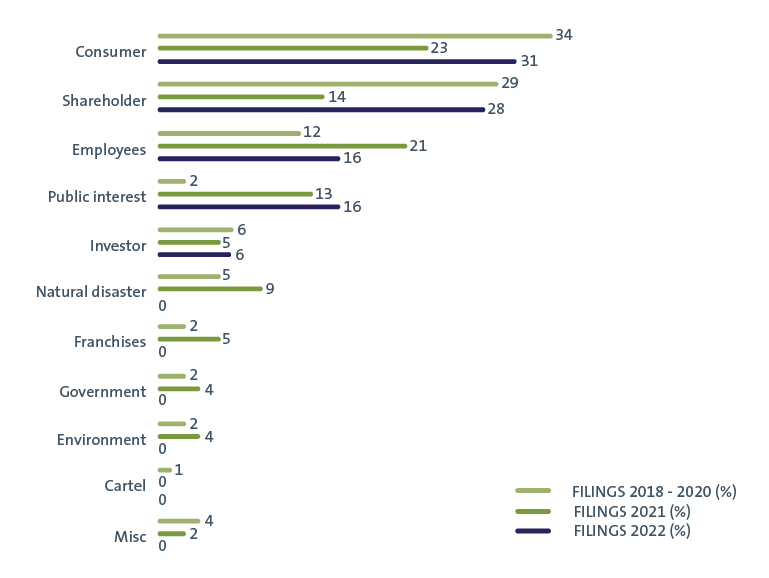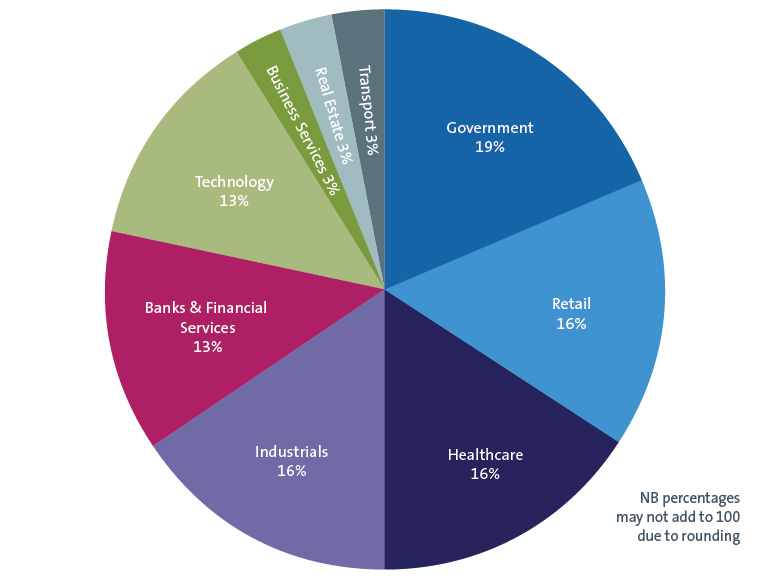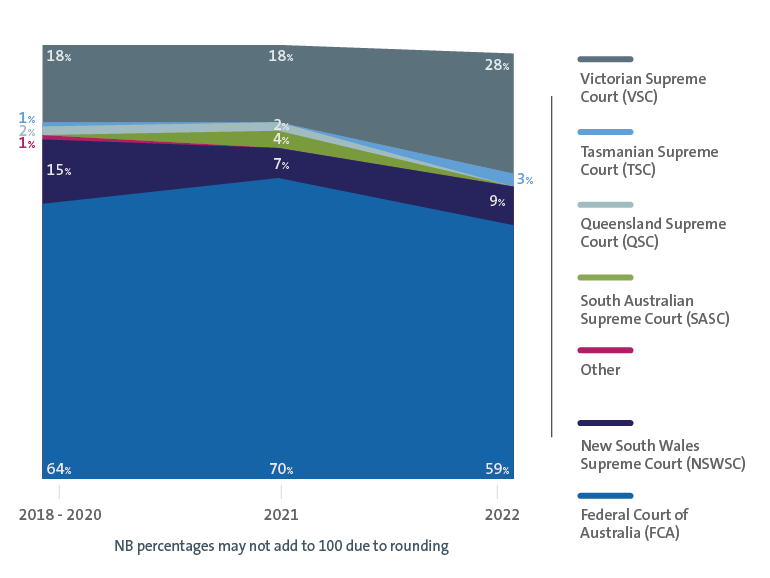Class action filings well down on recent years
The headline trend is that class action filings in 2022 were materially down compared with prior years.
As can be seen from the graph in this section, filings in 2022 were roughly equivalent to the level of activity seen in the early to mid-2010s—well below the heights of the past five years.
In part, this downturn is an anomaly caused by the fact a number of claims that, in the ordinary course, would have been filed in 2022 were fast-tracked to filing in late 2021, to get ahead of proposed legislative reform that would adversely affect litigation funders.
However, even accounting for that timing anomaly, there has undoubtedly been a marked downturn in filings across 2021 and 2022. Likely reasons include:
- the apparent end of the pipeline of class actions filed against banks and other financial services providers following the Financial Services Royal Commission;
- a transitional period for litigation funders – last year's change of government is expected to bring more favourable conditions for funders, but that process is not yet complete; and
- fewer competing class actions (ie multiple claims against the same defendant regarding the same or similar issues) than in prior years.

Consumer and shareholder claims dominate a smaller pool
In 2022, consumer and shareholder claims accounted (in roughly equal proportions) for about 60% of class action filings.
The biggest driver of consumer claims is alleged defects in motor vehicles – this is a clear trend that we expect to continue for the foreseeable future. The subjects of other consumer claims include travel experiences, alleged building defects, app store commissions and cosmetic surgery outcomes.
While shareholder class actions accounted for an increased percentage of filings compared with prior years, the actual number of shareholder claims filed has remained steady year on year. Moreover, just under half of all shareholder class actions filed in 2022 were the second (or third) claim against the defendant as to the same or similar issues (ie a competing claim).
The other notable contributors to 2022 filings were:
- employees' claims regarding alleged underpayments, rest breaks and vaccination policies; and
- public interest claims, including as to public housing, the use of capsicum spray by police, strip searches at music festivals, imprisonment for unpaid fines and treatment of young detainees.

A broad range of sectors targeted
In 2021, the government sector overtook the banking and financial services sector as the long-running biggest target for class action filings. While the government sector remained the biggest target in 2022, it and the healthcare, industrials, retail, and financial services and technology sectors experienced similar filing levels.
All the same, there are some broader trends to note, including:
- Perhaps most notably, there were no class actions filed against the banks during 2022 – a very significant change from prior years.
- There appears to be a clear trend of increasing claims against auto manufacturers – with these claims accounting for 80% of filings in the industrials sector in 2022.
- We have seen a steady increase in the proportion of class actions filed in the technology sector over the past few years – this is a trend we expect to continue, given the increasing focus on data/privacy issues, and also that many businesses in this sector are mass consumer-facing businesses.

Contingency fees attracting more class actions to Victoria
The Federal Court continues to attract the majority of class action filings – roughly 60% in 2022, which is slightly down on prior years.
The slight reduction in Federal Court claims is matched by a corresponding increase in claims filed in the Supreme Court of Victoria – just under 30% in 2022, a jump of about 10% on prior years. While there may be other factors at play, one obvious reason for this trend is the availability of group costs orders (GCOs) – orders allowing the law firm bringing the case to recover a percentage of the outcome (ie a contingency fee) – in class actions in that court.
The balance of claims were filed in the Supreme Court of NSW, save for one claim in the Supreme Court of Tasmania (the first case filed under that court's class action regime since it was introduced in late 2019).
In late 2022, a class action regime was introduced into the Supreme Court of Western Australia. That leaves South Australia as the only state not to enact a class action regime modelled on the Federal Court regime (although there is a 'representative model' available in South Australia that has been used from time to time for representative claims).






